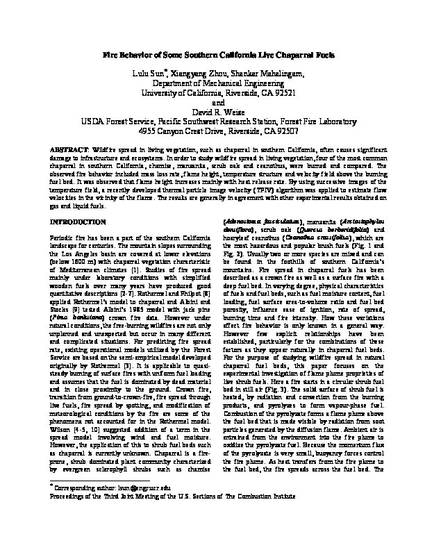
Wildfire spread in living vegetation, such as chaparral in southern California, often causes significant damage to infrastructure and ecosystems. In order to study wildfire spread in living vegetation, four of the most common chaparral in southern California, chamise, manzanita, scrub oak and ceanothus, were burned and compared. The observed fire behavior included mass loss rate, flame height, temperature structure and velocity field above the burning fuel bed. It was observed that flame height increases mainly with heat release rate. By using successive images of the temperature field, a recently developed thermal particle image velocity (TPIV) algorithm was applied to estimate flow velocities in the vicinity of the flame. The results are generally in agreement with other experimental results obtained on gas and liquid fuels.
Available at: http://works.bepress.com/lulu_sun/14/
